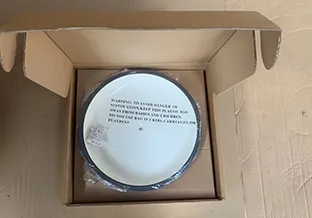
Methods for Curing Cast Iron for Enhanced Durability and Performance
The Process of Curing Cast Iron Techniques and Benefits
Curing cast iron is a crucial process that enhances the longevity and functionality of cast iron products. This process primarily involves the treatment and care of cast iron materials to prevent rust, improve seasoning, and ultimately optimize performance, especially in cookware such as skillets and Dutch ovens.
Understanding Cast Iron
Cast iron is an alloy of iron that contains 2-4% carbon and other alloying elements, imparting unique properties such as excellent heat retention and even heat distribution. These characteristics make cast iron an ideal choice for cooking applications; however, it is also prone to oxidation and rust if not properly maintained. Curing, or seasoning, is integral to fortifying cast iron against these threats.
The Curing Process
Curing cast iron usually involves the application of oils or fats through a process known as seasoning. Here’s a step-by-step breakdown of how to cure cast iron effectively
1. Cleaning Before seasoning, the cast iron needs to be cleaned thoroughly. This may include scrubbing with hot water and mild detergent to remove any residual food particles, oils, or rust that may be present. Following this, it is essential to dry the cast iron completely to prevent moisture from causing rust during the curing process.
2. Applying Oil Once clean and dry, a thin layer of oil is applied to the surface. Commonly used oils include vegetable oil, flaxseed oil, or shortening. These oils are chosen for their high smoke points and ability to form a durable layer when heated.
3. Heating After the oil is applied, the cast iron is heated to a high temperature, typically around 400-500°F (approximately 200-260°C). This heating can be done in an oven, ensuring that the stove or grill is well-ventilated. The heat causes the oil to polymerize and bond to the surface of the iron, creating a non-stick coating that protects against moisture and rust.
4. Cooling Once the cast iron has been heated for a sufficient time, it must cool down slowly. This cooling process allows the newly formed layer to solidify and properly bond with the surface.
curing cast iron

5. Repetition For best results, the curing process is often repeated several times. Each layer builds upon the last, resulting in a more robust and effective seasoning that enhances the cooking performance of the cast iron.
Benefits of Curing Cast Iron
Curing cast iron provides multiple advantages that make this process invaluable
- Enhanced Durability Properly cured cast iron can resist rust and wear, extending its lifespan significantly. This durability is why many cast iron pieces are passed down through generations.
- Improved Non-Stick Properties A well-cured surface prevents food from sticking, which is particularly beneficial for cooking delicate items like eggs and fish.
- Flavor Enhancement Seasoned cast iron develops a unique patina over time, which many chefs believe adds depth and character to the food being prepared. This is particularly true for dishes cooked over high heat, such as searing meats.
- Ease of Maintenance While cast iron does require some care, a well-cured piece often makes cleanup easier, as food particles are less likely to cling to the surface.
Conclusion
Curing cast iron is a time-honored tradition that not only protects the cookware but also enhances the cooking experience. By understanding the steps involved and the benefits afforded by this process, users can ensure their cast iron remains in optimal condition, ready to serve meals for years to come. Whether you are a culinary novice or an experienced chef, incorporating the curing process into your cast iron care routine will undoubtedly yield delicious results and preserve the integrity of your cookware.
-
Authentic Traditional Chinese Wok for High-Performance CookingNewsAug.02,2025
-
Season Cast Iron Perfectly with GPT-4 Turbo TipsNewsAug.01,2025
-
High Quality Cast Iron Cookware - Baixiang County Zhongda MachineryNewsAug.01,2025
-
Premium Cast Iron Pan: Durable & Perfect HeatNewsAug.01,2025
-
High Quality Kitchen Durable Black Round Cast Iron Cookware Pancake Crepe Pan-Baixiang County Zhongda Machinery Manufacturing Co., Ltd.NewsAug.01,2025
-
Cast Iron Cookware - Baixiang County Zhongda Machinery | Nonstick, Heat ResistanceNewsAug.01,2025


